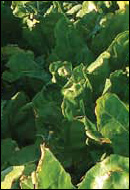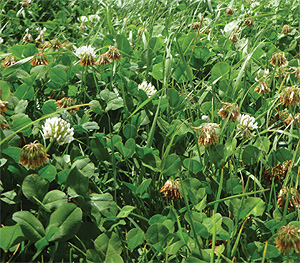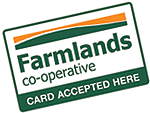 |
|
|
|
Issue 70 / Summer / January 2016
Hi [firstname]
 Welcome to the January 2016 SeedData newsletter and season’s greetings to you and your family.
Welcome to the January 2016 SeedData newsletter and season’s greetings to you and your family.
I trust the festive season went well and although it is a very busy time for farmers, I hope you got the opportunity to spend some time with family, as I did.
For most of us, the rain just before Christmas was a great present and the really good one after the New Year was a welcome and encouraging way to kick the New Year off.
I feel sorry for the campers (including my son) who had their holiday plans cut short, but seeing North Canterbury get its biggest single rain event since July 2014 was for me a great sight to behold.
I recorded 25 millimeters at home but many of my clients got between 30 and 40 millimeters! Awesome!
In this months edition of the SeedData Newsletter I am talking about and recommending some jobs that need to be done around the farm in your fodder beet crops, as well as a new product to help you clean up your silos. We also look at a new white clover on the market.
Please browse these topics below:

Fodderbeet information

By now many of you will have completed your fodder beet crops weed control program. Hopefully the end result is a weed free crop, with the crop now starting to canopy over.
Weed control is the single most important job you have to do when growing a fodder beet crop, however there are other important jobs that will now need you attention.
Fertiliser
The first of these important jobs is thinking and consulting about the type, frequency and amount of fertiliser you need to apply to your crop.
This is a subject in itself and as I am no expert I strongly recommend that you consult with your local fertiliser expert.
I sometimes observe crops in April or May that appear to run out of steam, so getting the correct amount of fertiliser is a very important job.
Don’t cut corners. After all you’re growing a crop with a very big yield potential !
Irrigation
A lot of fodder beet crops are grown under dryland conditions and are of course subject to what cards that get dealt to them during the season. However my clients who irrigate often ask “what is the irrigation requirement for fodder beet?“
As with a lot of aspects of growing fodder beet, the research on growing the crop in New Zealand conditions is struggling to keep up with growth in area, that has occurred over the last 4-5 years.
Irrigation requirement is no exception to this, so I sometimes struggle to answer my clients questions.
However the following article I found explains this subject as well as I’ve found to date and I hope you find it of some help:
Irrigation of Fodder Beet
Fodder beet is very efficient at utilising rain and irrigation water.
The optimum frequency and application rates of water were studied for fodder beet and published at the NZGA Conference at Alexandra in November.
It concluded that the most economic watering method tested was replacing 50% of evapotranspiration every three weeks.
However, it is important to note that the soil was a deep soil near Lincoln with high water holding capacity.
It is likely that on lighter and shallower soils that this frequency is not adequate to optimise yield.
On these soils fodder beet yielded 24 t DM/ha without irrigation, and 28 with irrigation. This four tonne advantage would provide about $1200/ha to cover the costs of irrigation.
They also found that the water use efficiency of fodder beet (80 kg DM/mm when rainfed) was significantly higher than other forage species grown under similar environments. It was in fact twice as efficient as kale!
Removal of Bolters
There are two types of fodder beet bolters that you can get in your crop. They are either environmental or annual bolters (See pictures below. Our thanks to DLF Seeds for this picture).
- Environmental bolters are bolters that grow as a result of several issues which include seed lines, time of sowing etc.
As most of the fodder beet seed lines are of very high quality and are selected to have good resistance to bolters we normally don’t see many of these types.
- Annual bolters are bolters that come from weed contamination within the crop. In second year paddocks they come from old root chips or from pollination from weeds outside the crop.
These are the more important of the two types as they can produce up to 1500 wild seeds per plant.
With this level of seed production it’s very important these are removed from the crop particularly if you are considering growing fodder beet in the same paddock the next season or two.
As they are fodder beet plants there will be no method of weed control for them, therefore turning them into weeds. When pulling them out it’s best to remove them completely from within the paddock.
As further research on this and other subjects come to hand I’ll pass them on off course.
Contact Link: Contact Specialty Seeds with any of your fodderbeet questions.
Back to top
 New Smoke Generator ready to go!
New Smoke Generator ready to go!
With harvest just around the corner, now is a great time to clean up within and around your silos. It is therefore timely that we see the release of a new smoke generator from Orion Agriscience.
The new GrainMaster SuperSmoke is a world first - dual active ingredient smoke generator product that has been proven to provide superior control of key stored grain pests such as grain weevil.
GrainMaster SuperSmoke combines two of the worlds leading stored grain active ingredients into one easy to use product.
“Pirimiphos methyl is already well known as the ingredient in the Actellic range.
Deltamethrin is a highly active second generation pyrethroid that has provided excellent control of stored grain pests in the UK and many other countries.”
Test results have demonstrated that the twin active ingredient combination in GrainMaster SuperSmoke provided superior control of Grain Weevil and Sawtoothed Grain weevil compared to the single active ingredient competitor (containing permethrin).
“It is always exciting to bring new products to market,” says Murray Hern, general manager Orion AgriScience.
“The really good news with GrainMaster SuperSmoke is that the twin active ingredient combination provides levels of control that are clearly superior to other products. This is a real step forward for the industry.”
Treatment information
GrainMaster SuperSmoke is available in a 60g generator that will treat silos and grain stores with capacity up to 250 metric tonnes of wheat, 200 MT of barley or 150 MT of oats.
To get some of these for your silo please feel free to contact us.
Website Link: Click here to view more details on the GrainMaster SuperSmoke generators.
Contact Link: Contact Specialty Seeds if you have any questions on this new product.
Back to top
 New Clover showing up well in trials
New Clover showing up well in trials

Last season saw the release of a new large leaf white clover called Grasslands Legacy from PGG Wrightsons Seed.
We managed to get some of it out to our clients and the results to date have been encouraging.
As the name Grasslands denotes, Legacy was selected from material within the AgResearch stable.
There have been many successful clovers released from AgResearch (e.g. Grasslands Kopu II).
It was an easy decision for us to take on some Legacy White clover, given the track record AgResearch has, in producing excellent clovers.
With farmers demanding better pasture persistence while not losing dry matter production ability Grasslands Legacy is certainly a step in the right direction.
Grasslands Legacy in recent trials conducted by AgResearch has shown up well.
It has recorded a higher tolerance to moisture stress, improved stolon density and much improved leaf size and dry matter yield when compared to other clovers currently on the market.
As these trials were conducted over 4 years, the information they provide can be accepted with confidence.
Should you like a copy of this trial information please feel free to contact me.
From Specialty Seeds point of view, we see that Grasslands Legacy is very competitively priced, readily available and can be purchased either bare seed or Superstrike coated and is one to look out for this coming Autumn.
Downloads Link: Download the Grasslands Legacy White Clover brochure.
Contact Link: Contact Specialty Seeds if you have any questions on this new product.
Back to top

 As always, we hope this issue has been of some value to you. If you have a comment on this newsletter or anything on our website, please give us a call on our Freephone: 0800 727 8873, send us an email at: mail@specseed.co.nz.
Kind Regards

Stephen Finch & David Percival
Specialty Seeds - New Zealand
|
|
|
|
 |
|
|

|
If you are having trouble viewing this email, .
If you would like to be removed from this newsletter please click here to
|
